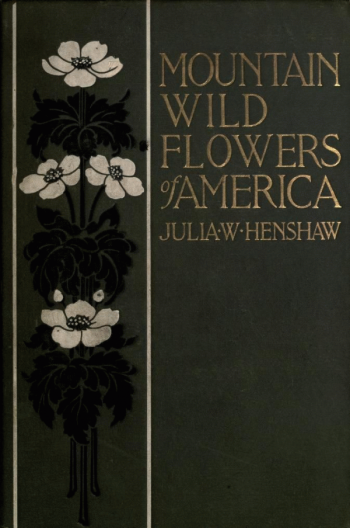 Photography was a major innovation for field guides in the early 20th century. Julia W. Henshaw (1869-1937) was an early adopter with her 1906 book “Mountain Wild Flowers of America.” While this title implies inclusion of alpine plants across Canada and the United States, she lived in Vancouver, BC and gives special attention to our regional mountains. The Miller Library also has a later edition (1917) under the slightly revised title of “Wild Flowers of the North American Mountains.”
Photography was a major innovation for field guides in the early 20th century. Julia W. Henshaw (1869-1937) was an early adopter with her 1906 book “Mountain Wild Flowers of America.” While this title implies inclusion of alpine plants across Canada and the United States, she lived in Vancouver, BC and gives special attention to our regional mountains. The Miller Library also has a later edition (1917) under the slightly revised title of “Wild Flowers of the North American Mountains.”
Born in England, she studied art in her home country, but didn’t take up photography until she moved to British Columbia around 1890. Her images are in a studio setting, in grey scale with a neutral grey background. Ordered by color, it is not too difficult to imagine the appearance of the living plants.
Like other writers of these early field guides, Henshaw had abundant energy and a wide variety of interests. Daphne Bramham writes in the “Vancouver Sun” (published September 8, 2014) that she was “an explorer and general outdoorswoman” who climbed in the Rockies and mapped much of the interior of Vancouver Island. A strong advocate participation in World War I, she drove an ambulance at the Western Front in Europe, and spoke across Canada of her experience to encourage more involvement in the war effort. She had her indoor pursuits, too, as a theater critic (using Julian Durham as a pseudonym), writing novels, and founding a social club for women, the first such society in Vancouver.
Other than the use of photographs, this field guide is very similar in style to the others of the time. The writing is intended for a general audience, but Henshaw acknowledges a respectable list of botanists and naturalists as scientific advisors. However, she is at her best with her subjective descriptions. In reference to Erythronium giganteum (now E. grandiflorum var. grandiflorum), which in her day was burdened with the common name of “yellow adder’s tongue” (now “glacier lily”) she writes, “Late at evening, when beneath the star-sown purple of the sky you return from making some alpine ascent, the pure flames of these wild Lilies gleam in their leafy setting with a pale golden light, and illuminate the green brink of your path.”
Excerpted from the Winter 2020 issue of the Arboretum Bulletin